Gomantong Cave in Borneo: A warning
Bat guano, cockroaches and other grossness. That’s what awaits you at Gomantong Cave in Borneo.
A standard stop on the adventure tourism circuit in Sabah, the eastern part of Malaysian Borneo, Gomantong Cave is near enough to the popular river boat rides on the Kinabatangan River to make a relatively short detour.
So that’s what we did. And now I want to warn you about doing the same thing.
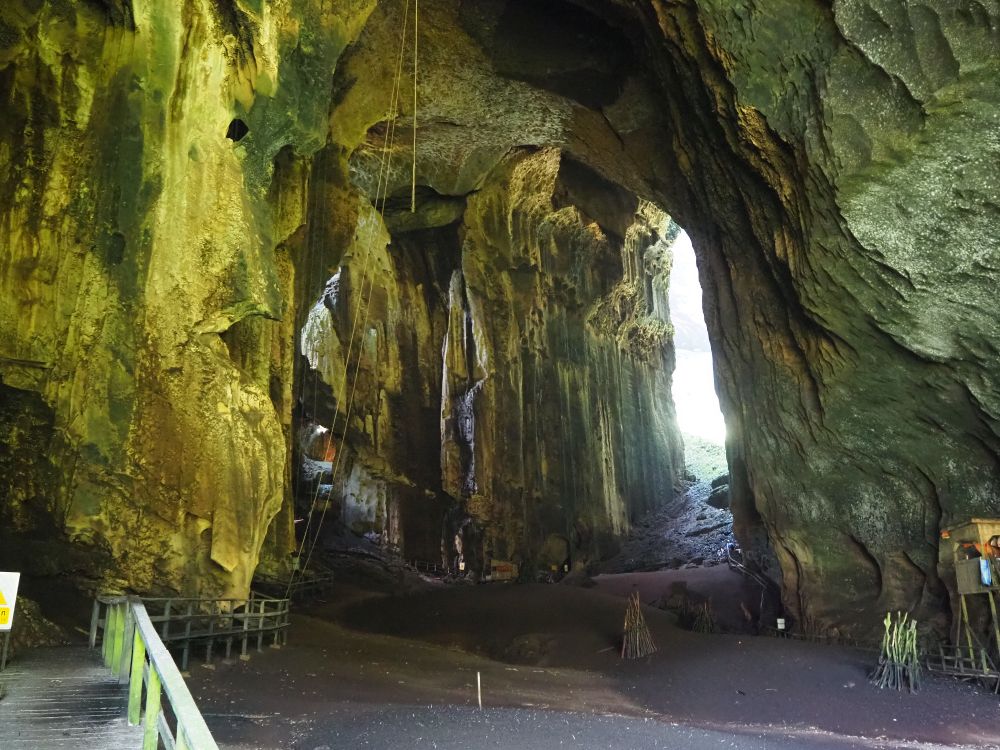
Disclosure: This article contains affiliate links. If you click on one and make a purchase, I will receive a small commission. This will not affect your price.
I’m not saying you shouldn’t go. It’s a large and impressive cave. The way the light filters in through holes far back in the cave is quite beautiful.
However, if you are at all squeamish about creepy-crawlies of any sort, you might want to think twice about going there.
Entering the cave
The first thing that struck me as I approached the cave was its “wow” factor: it’s huge and quite beautiful.
Within a moment, the smell hit. This cave stinks. The reason this cave stinks is that the center of its floor is filled with a massive pile of bat sh*t, more politely called guano.
To be precise, it’s a pile of guano from both the approximately two million bats that sleep there by day, and the thousands of swiftlets that sleep there by night.
A raised boardwalk leads to the entrance to the cave, and then continues into the cave to form a large loop along the edges of the floor of the cave: around the huge pile of guano. We took the left entrance to circle the cave clockwise.
You might also enjoy reading these articles:
- Lankayan Island Resort in Malaysian Borneo
- Visiting Turtle Sanctuaries in Malaysia (and elsewhere)
- Exploring the Brunei Rainforest: Ulu Temburong National Park
Inside the cave
The cave is crawling – literally crawling – with cockroaches. They crunched underfoot, covered the stone wall of the cave to our left, and appeared here and there on the railing among the bat guano stains.
It was the stuff of nightmares.
But it didn’t stop there. As we walked the boardwalk – and I walked extremely carefully for fear of slipping and falling and actually having to touch something with anything other than the soles of my shoes – Oh, no, I was wearing open sandals! – we passed an assortment of other bugs: a big hairy spider, for example, and an assembly of millipedes, equally hairy.
I’ve learned since our visit that besides all those bugs there were also rats as well as snakes that feed on the rats.
Above us, we saw bats: thousands of wrinkle-lipped free-tailed bats. Yes, that’s what the species is actually called, though I didn’t get close enough to see if they really had either wrinkled lips or free tails. It was daytime, so they were sleeping.
So what were those creatures flying around up there just like bats? Swiftlets, a small black bird that also likes to sleep in caves hanging from the wall, but during the night.
Bird’s nest soup
As we walked, our guide was calmly explaining the industry built around those swiftlets. Two sorts of swiftlets (black-nest swiftlets and edible-nest swiftlets) make nests out of their own hardened saliva. The nests hang on the walls of caves, and these nests are edible. They’re used in parts of Asia for bird’s nest soup, and they’re very valuable.
The fact that these birds’ nests are edible must have been discovered sometime hundreds of years in the past. Someone must have gone into one of these disgusting caves, taken a nest off the wall, and eaten it. Or maybe he/she cooked it first.
Who thinks of that? Who would take a bird’s nest and consider it food?
The nests are so valuable that the swifts are threatened, since people harvest the nests when they shouldn’t, and the population drops as a result. So this cave is protected by guards. Our guide pointed out the guard posts: one small wooden cabin at the entrance, and one at each of the openings we could see in the distance.
Even though this is a protected cave, the nests are still harvested, but only after they’ve been abandoned. Our guide pointed out the contraptions that the men use to reach the nests high up on the walls.

It was all very interesting, but I just wanted to get the hell out of there without touching anything.
Leaving the cave
We came at last back to the beginning of the loop where we’d started. Our guide explained that sometimes that huge pile of guano in the center is even bigger, but whenever it rains, some of it washes into a small stream he pointed out below us, between the walkway and the cave wall.
It hadn’t rained in a couple of days, so the stream was just a trickle, but it was a thick, black, disgusting trickle. And there were crabs in that trickle: live crabs. Something actually lives off of a stream of water thick with bat sh*t.
Should you visit Gomantong Cave?
If you’re squeamish? No, absolutely not! It is simply horrifying to walk there, because you will literally be crunching on cockroaches as you go.
If you’re not squeamish? Go ahead, but beware: you may not mind a cockroach here and there, but this is thousands. And it stinks.
You’ve been warned.
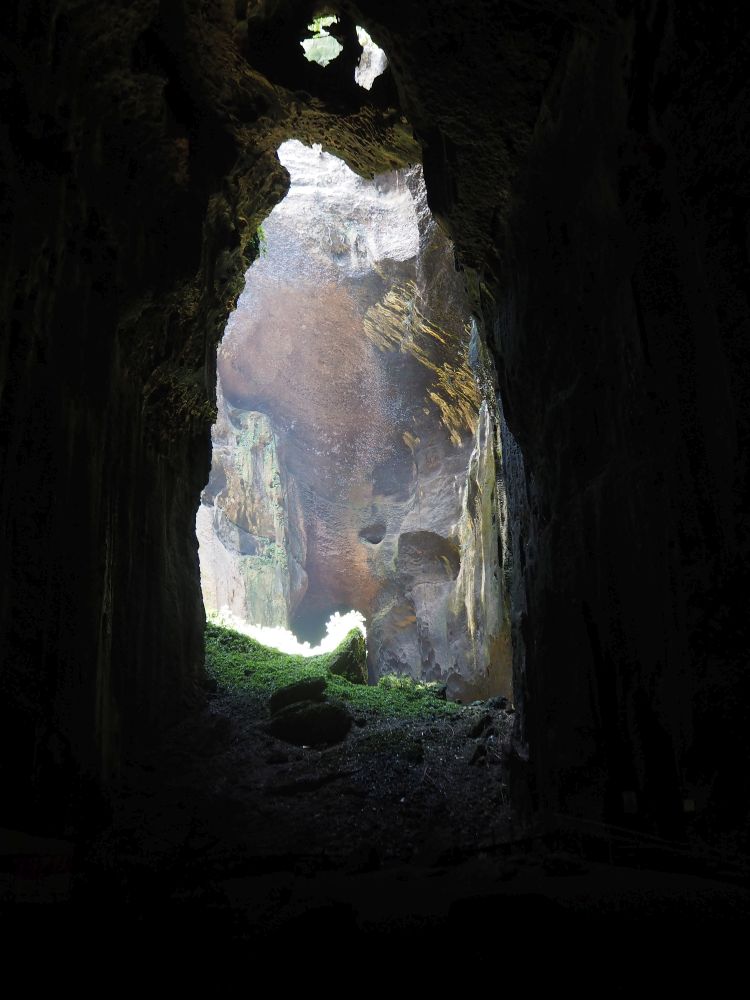
Visitor information for Gomantong Cave in Borneo
There are actually two main caves: the one we went into is the “black cave” and mostly holds the less valuable black nests. It’s the only one open to the general public. The bigger one behind it is called the “white cave” and mostly has the white nests. It is only accessible by prior arrangement and with the proper equipment for spelunking. There are another dozen or so smaller caves in the cave complex.
Every evening between 17:15 and 18:15 you can witness the changing of the guard, when the bats wake up and fly out of the cave and the swiftlets come in and settle down for the night.
The black nests are harvested in April and August, while the white nests are harvested in February and August. If you’re there at the right time, you might be able to watch the precarious ways that the harvesters reach the nests high on the cave walls.
Gomantong Cave in Borneo is 35 kilometers from Kota Kinabatangan and 110 kilometers from Sandakan. There’s no public transportation, so you’ll need to hire a taxi or rent a car. In our case, it was an add-on to a three-day Kinabatangan package that included a homestay, riverboat wildlife viewing and jungle trekking.
If you decide you still want to see Gomantong Cave, you can arrange it by clicking on one of the tours below. Both combine Gomantong Cave with a river cruise on the Kinabatangan River.
Admission to Gomantong Cave is expensive, considering how little time you’ll probably spend inside the cave. We paid 30 ringgits (about €6 or $7) for the privilege of being totally grossed out.
If you go, wear closed shoes with a good tread so you won’t slip. Gloves would be a good idea too. If it’s rained, the walkway can be slippery, and if you slip, you’ll have to touch something.
Take my word for it, you don’t want that!
Here’s a seven-day itinerary on Olly Gaspar’s excellent We Seek Travel website.
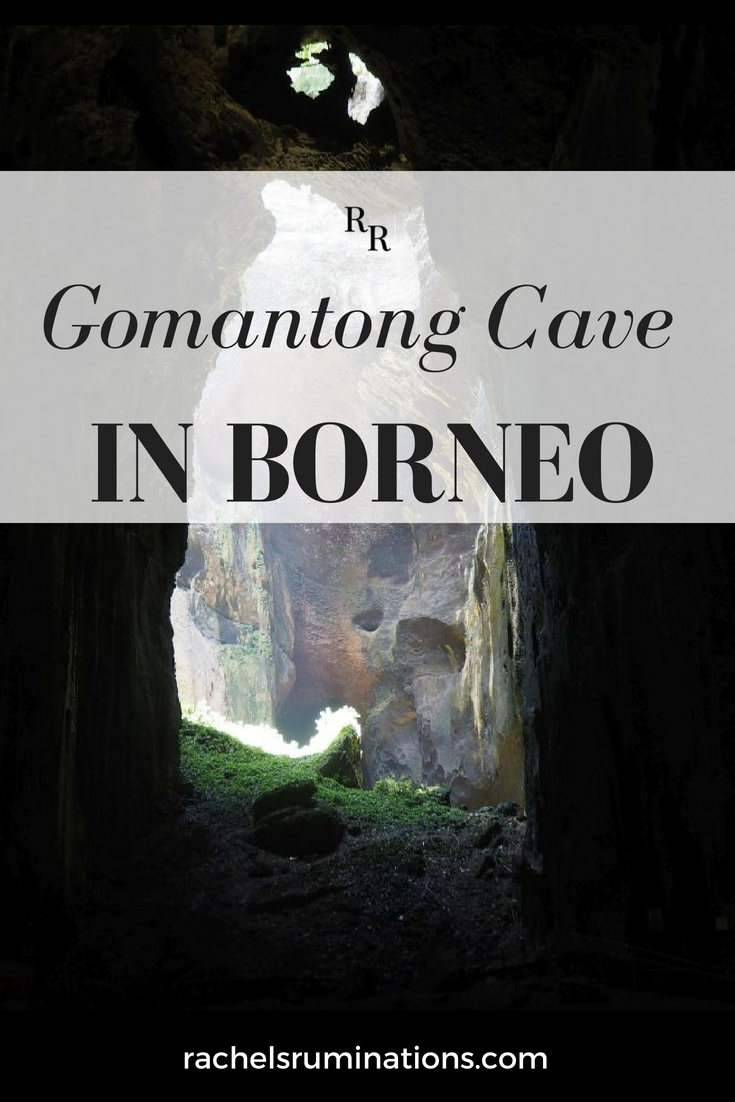


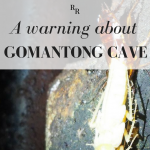
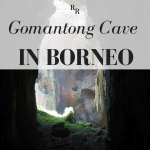
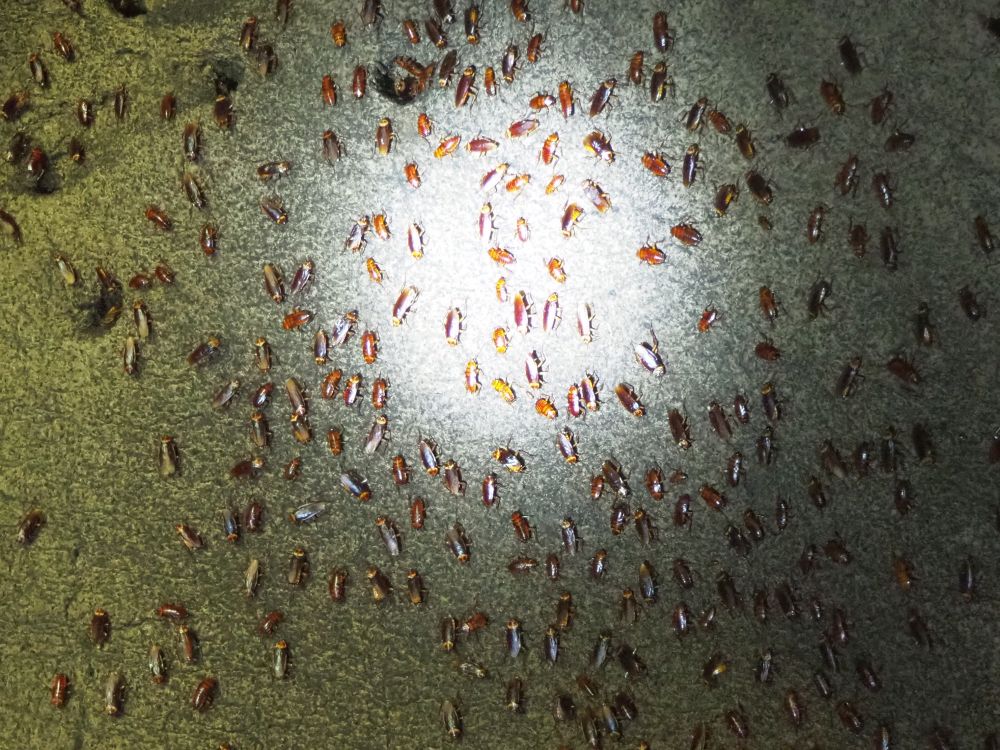

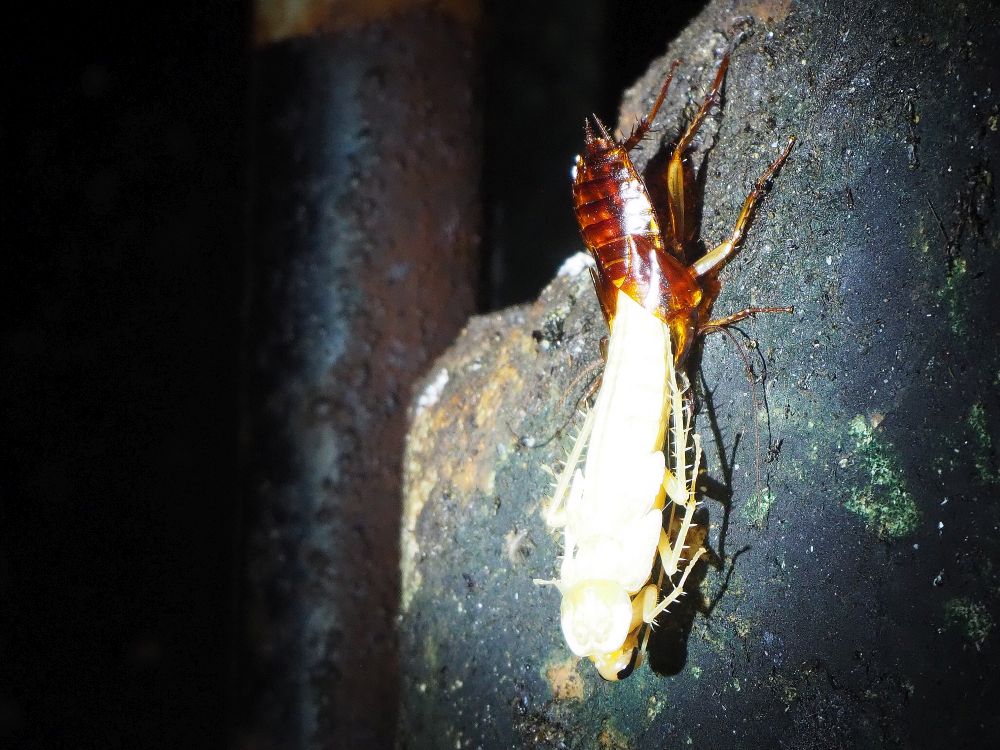

I didn’t visit the caves when I was in Borneo because someone told me how smelly it was and about the thousands of cockroaches. I would have never slept again!
Thanks for the warning. I would not go into that Cave even if they paid me. I am more than squeamish about crawlies. And my sense if smell is pretty sharp.
Thanks for the warning that precedes this post! Visiting the Gomantong Cave would be my worst nightmare!!! I can’t even imagine doing this for pleasure.
This area of Borneo is still on my list of magic places to visit. Lol on the birds nest soup, heard it was a big delicacy in Asia
You know, I’m usually pretty brave about trying new foods, but those nests are made of saliva. I don’t think I could do it…
they usually boiled it with rock sugar until it the nest becomes soft so it’s like drinking a sweet jelly drink..
Really? That doesn’t make it seem any more appetising!
Really nice post and beautiful pictures, you shared amazing information about the Cave. It’s really enjoyable, Thanks for sharing this post with us.
I’m going to Borneo in 2019, but I think I’ll skip the cave!! 🙂
Wise choice. I’ve learned my lesson about researching things ahead of time!
Pinned. And yargh!
I literally laughed out loud at your post – brilliant! We are heading to Borneo with our 6 and 8 year olds next year and I thought this would be a cool thing to do. Now I’m not so sure – they’re very wary of creepy crawlies and one has a super strong sense of smell! Thanks for sharing what it’s ‘really’ like, I think we’ll give it a miss!
I’m glad you enjoyed it! If it’s something they’d get a thrill out of (as opposed to nightmares!) it might be worth going anyway. There’s no obligation to go inside the cave; they could stand at the opening and get a sense of it.
Super useful post, crazy how people take advantage of the swift’s nests when it’s actually possible to harvest them sustainably.
I’m going in March. I’m more interested in seeing the bats fly out. Is there a tour I can take to see them without actually going into the cave. I am over my childhood arachnophobia and they intrigue me but no thanks. Stepping on Cockroaches – no thanks again.
I just searched in Get your Guide and Viator, both of which I use and am an affiliate for, and neither lists an evening tour to Gomantong; they’re all daytime packages. I’m sure you could ask at your hotel once you’re there. It might cost you, since you’d have to hire someone to get you there at the right time.
Glad that I went to the cave, you have to see where someone decided this is the place to check out a soup recipe, still can’t forget the thousands of cockroaches and millipedes protecting the bat shit!
I know! Who thinks of that?!
For me the whole idea of travelling is to see and experience different cultures and different landscapes and wildlife. This cave is probably my main reason for wanting to go to Borneo and if I’m travelling all that way there is no way I would miss out on this, bring it on.
Yes, I figured some people would really like this cave, but I wish I’d been warned ahead of time, which is why I wrote the article. So consider yourself warned and enjoy!
There are really beautiful photos. The information that is shared about the caves is very well written. Thank you sharing.
I’ll be based in Sarawak (9th-23 Feb 2023) and did consider visiting Gomantong Cave. Your blog put me off, do you have a recommendation for a cave visit where I’ll be based?
It’s the only cave I visited. Having said that, I think you can count on pretty much any such cave to smell bad. The question is how big is the cave? (Going on the assumption that bigger ones get more outside air) and what’s your tolerance for bad smells and bugs? Lots of people go to Gomantong and enjoy it, but they must not be as disturbed by bugs and bad smells as I am.
Oh thanks for the stomach churning description and helpful logistics! That’s a NOPE!!
LOL! You’re welcome!
Luckily I read this!!! gosh~~~
LOL!